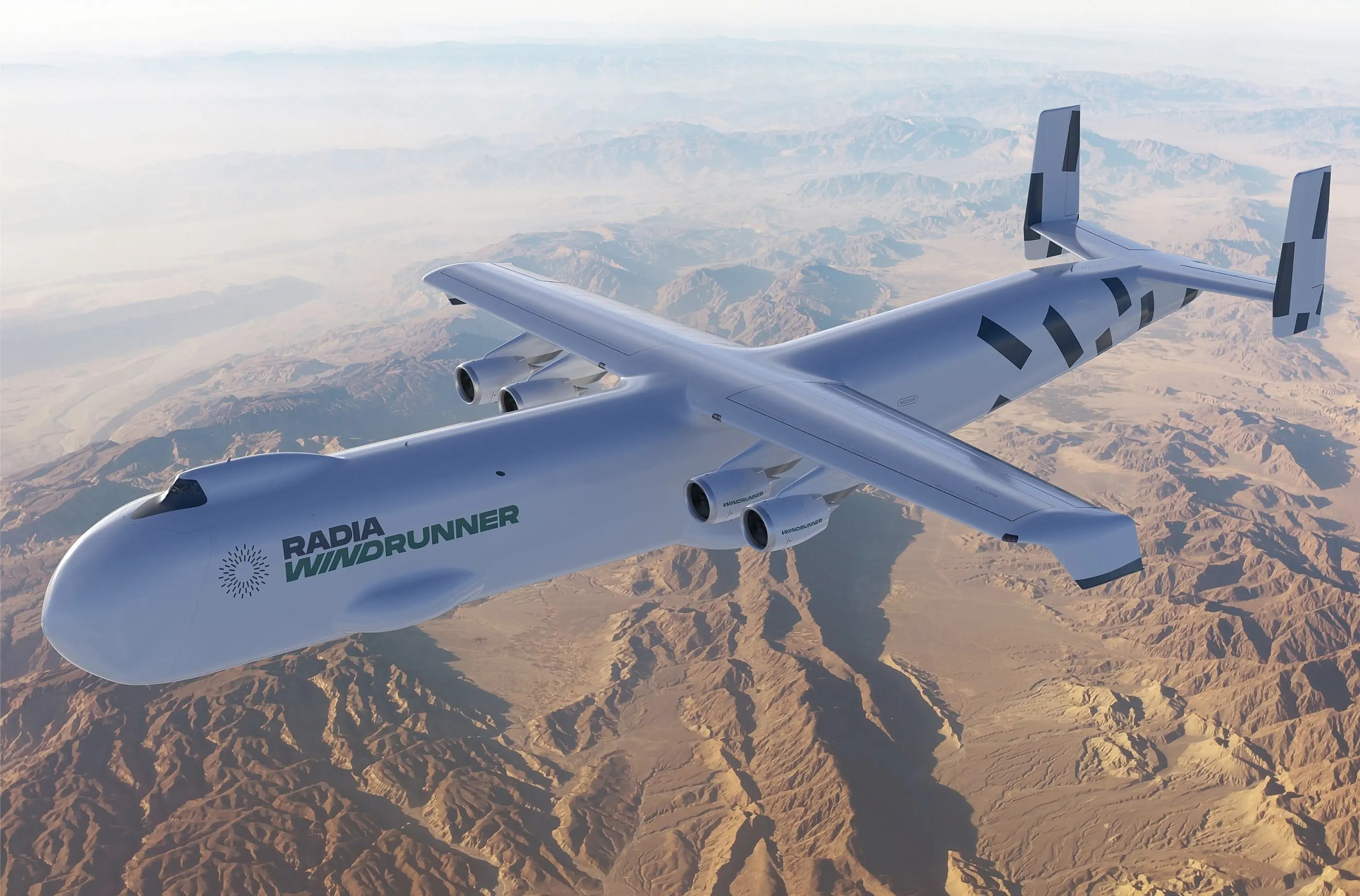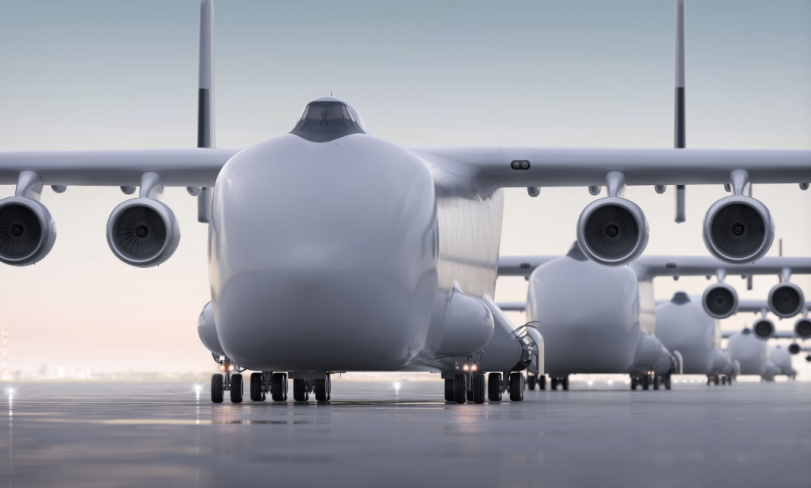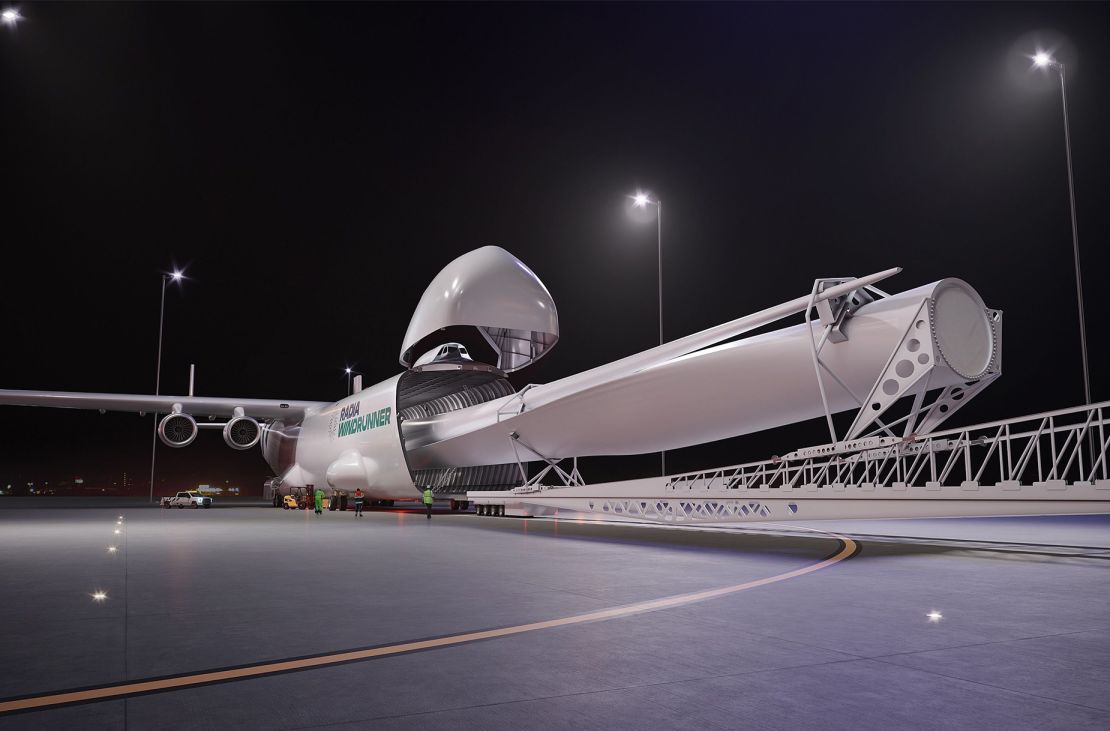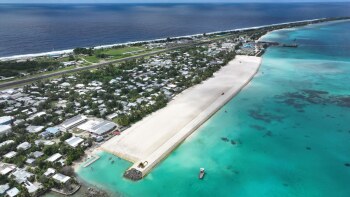With today's alarm bells ringing about the global energy crisis, onshore wind farms have been offered as one potential solution. Onshore wind farms generate power from land with the natural movements of wind, which benefits the environment by reducing emissions significantly compared to other energy sources. Radia, a Colorado-based energy startup, has been developing the world's largest aircraft in aviation history.

The Aircraft
Dubbed The WindRunner, it dwarfs the Boeing 747. It will have a cargo bay volume of 272,000 cubic feet, a length of 356 feet (109 meters), and a wingspan of 261 feet (80 meters). The aircraft's specs make it have 12 times the volume of a Boeing 747 while also being 127 feet (39 meters) longer. Besides the Boeing 747, it will also be larger than the Antonov An-225, the heaviest aircraft built so far but destroyed towards the beginning of Russia's invasion of Ukraine in February 2022.
Although the aircraft will be very large, its engineering is not groundbreaking. With Federal Aviation Administration (FAA) approval, Radia will use existing technology, tried and true aviation materials, components, and fabrication techniques. Doing so allows Radia to reduce its risk when building the WindRunner. While Radia has not confirmed a timeline, other online reports have speculated that commercial operations could begin as soon as 2027.

The aircraft will operate from regional hubs, delivering 300-foot (91-meter)-long blades directly to wind farms. Radia says it "can land on airstrips as short as 6,000 feet (1,800 meters), something no other large commercial aircraft can achieve." To help further contribute to meeting world decarbonization targets, the WindRunner will use sustainable aviation fuel and only require a dirt or gravel runway for landing.
Mark Lundstrom, Radia's Founder and CEO, said:
“Radia will create a step-function improvement for onshore wind in profitability, lower cost, and higher consistency. This will result in more wind projects, more green fuel projects, lower energy price, more profits, and more money being invested in the energy transition.”
WindRunner Impacts
Radia is counting on Bloomberg NEF's estimation that up to $10 trillion will be spent on onshore wind farms until 2050. Currently, onshore turbine blades have an average length of up to 230 feet (70 meters). Offshore wind turbines, however, have blades longer than 341 feet (104 meters). It is nearly impossible to build onshore wind farms with turbine blades of that scale due to how difficult it is to move on the road. Even with blades that are half as long, transporting them is still a logistical nightmare.

If onshore wind farms could be built at the scale of offshore wind farms, harvesting even more wind energy would be cheaper. This phenomenon is all thanks to the disproportionate gains in harvesting energy from every bit of length added to a turbine.
To underscore the importance of increasing the scale of onshore wind farms, Radia has raised almost $100 million for the cause. It estimates that when bigger turbines can be transported, onshore wind farm developers could reduce their energy harvesting costs by up to 35%. Additionally, its aircraft will make wind farms viable in even more locations, which will help further reduce carbon emissions globally.
Lundstrom added about the aircraft's potential to revolutionize the sector:
“Offshore turbines are more than two times as powerful as onshore turbines because they are bigger.If we could move these large turbines onshore, they would be twice as profitable and open up three times more land for economically viable wind farms. Why not put them onshore? Because literal roadblocks stand in the way.
Radia will respond by building WindRunner to overcome these barriers, bring the benefits of offshore wind onshore, and deliver what we call GigaWind – the largest land-based turbines today and the even larger ones of the future.”
The FAA and ICAO: Organizations that Regulate the Skies » The Iron Dome: How Israel Was Able to Thwart 99% of Iran's Missile Attacks Thus Far » ANALYSIS: Some Pacific Airports Could be Underwater Sooner Than We Think »
Comments (4)
 Lewis
It will never leave leave the ground. Bunch of radical yoyos.
Lewis
It will never leave leave the ground. Bunch of radical yoyos.
 zFPWdwPk
20
zFPWdwPk
20
 zFPWdwPk
20
zFPWdwPk
20
 zFPWdwPk
20
zFPWdwPk
20
Add Your Comment
SHARE
TAGS
NEWS Radia Startup Innovation Future Boeing 747. Antonov An-225 Aerospace Geopolitics Energy Sustainability InvestmentRECENTLY PUBLISHED
 Easter Island: The World's Loneliest Airport?
While most places are generally accessible, some are so remote and desolate that they can only be reached by air or sea. This is the case with Easter Island, a Chilean territory in the middle of the South Pacific Ocean.
INFORMATIONAL
READ MORE »
Easter Island: The World's Loneliest Airport?
While most places are generally accessible, some are so remote and desolate that they can only be reached by air or sea. This is the case with Easter Island, a Chilean territory in the middle of the South Pacific Ocean.
INFORMATIONAL
READ MORE »
 The Impact of Automation and Artificial Intelligence on the Future of Aerospace Education
As with most industries, the aerospace industry is at a crossroads with artificial intelligence and its future role in the important industry.
INFORMATIONAL
READ MORE »
The Impact of Automation and Artificial Intelligence on the Future of Aerospace Education
As with most industries, the aerospace industry is at a crossroads with artificial intelligence and its future role in the important industry.
INFORMATIONAL
READ MORE »
 ANALYSIS: Some Pacific Airports Could be Underwater Sooner Than We Think
As some nations shrink into the sea, aviation remains important to keeping the economy and tourism industries alive.
INFORMATIONAL
READ MORE »
ANALYSIS: Some Pacific Airports Could be Underwater Sooner Than We Think
As some nations shrink into the sea, aviation remains important to keeping the economy and tourism industries alive.
INFORMATIONAL
READ MORE »




